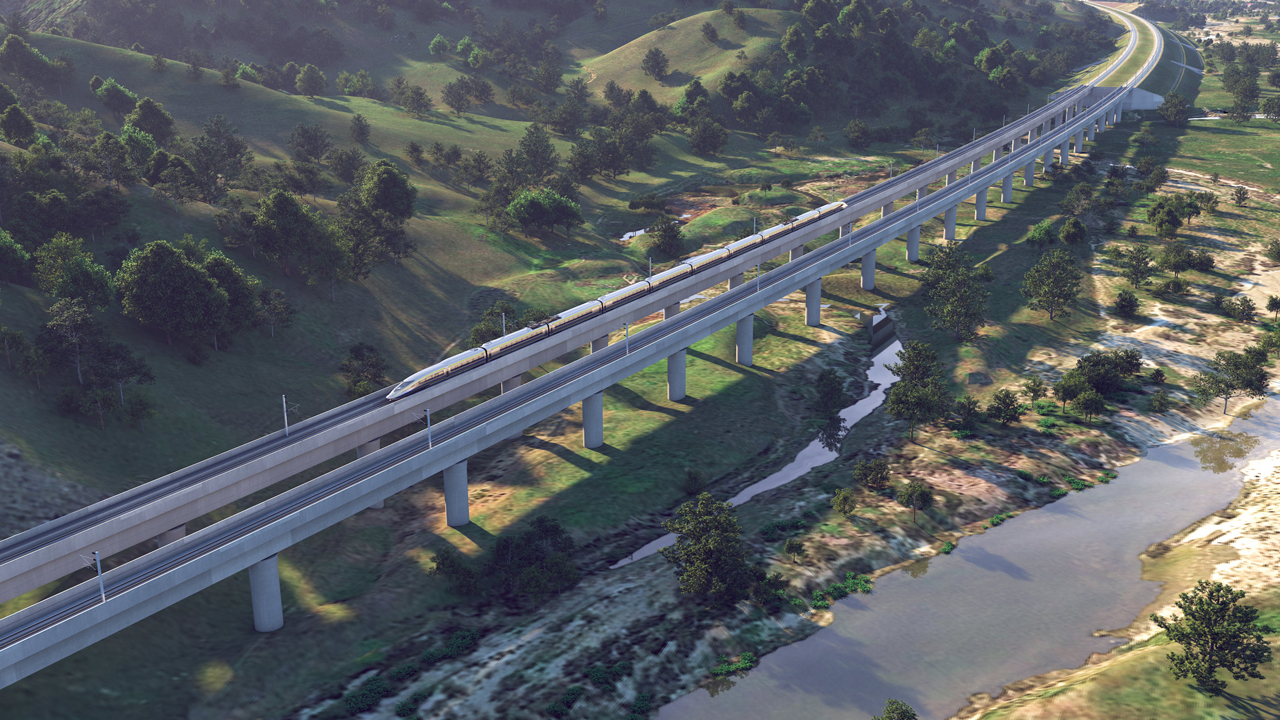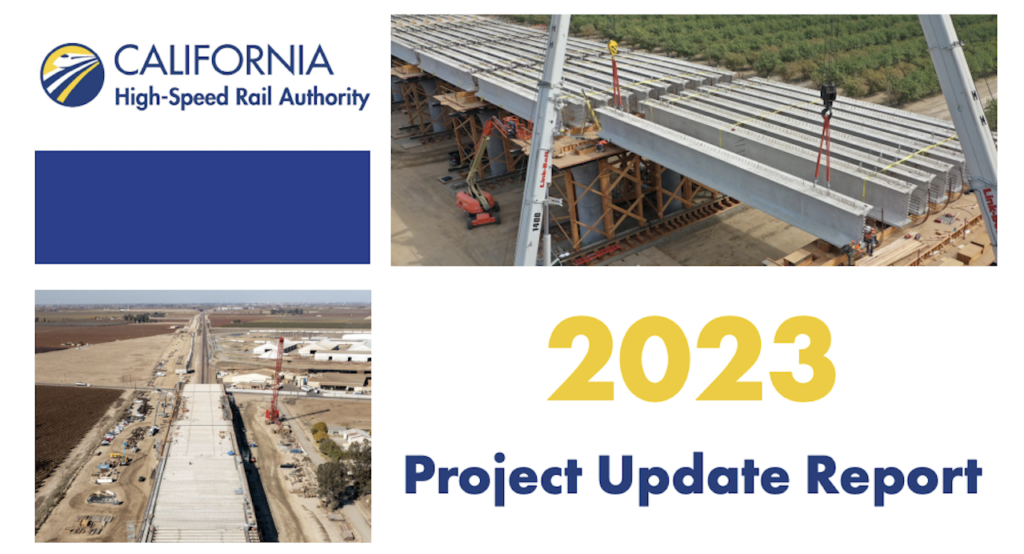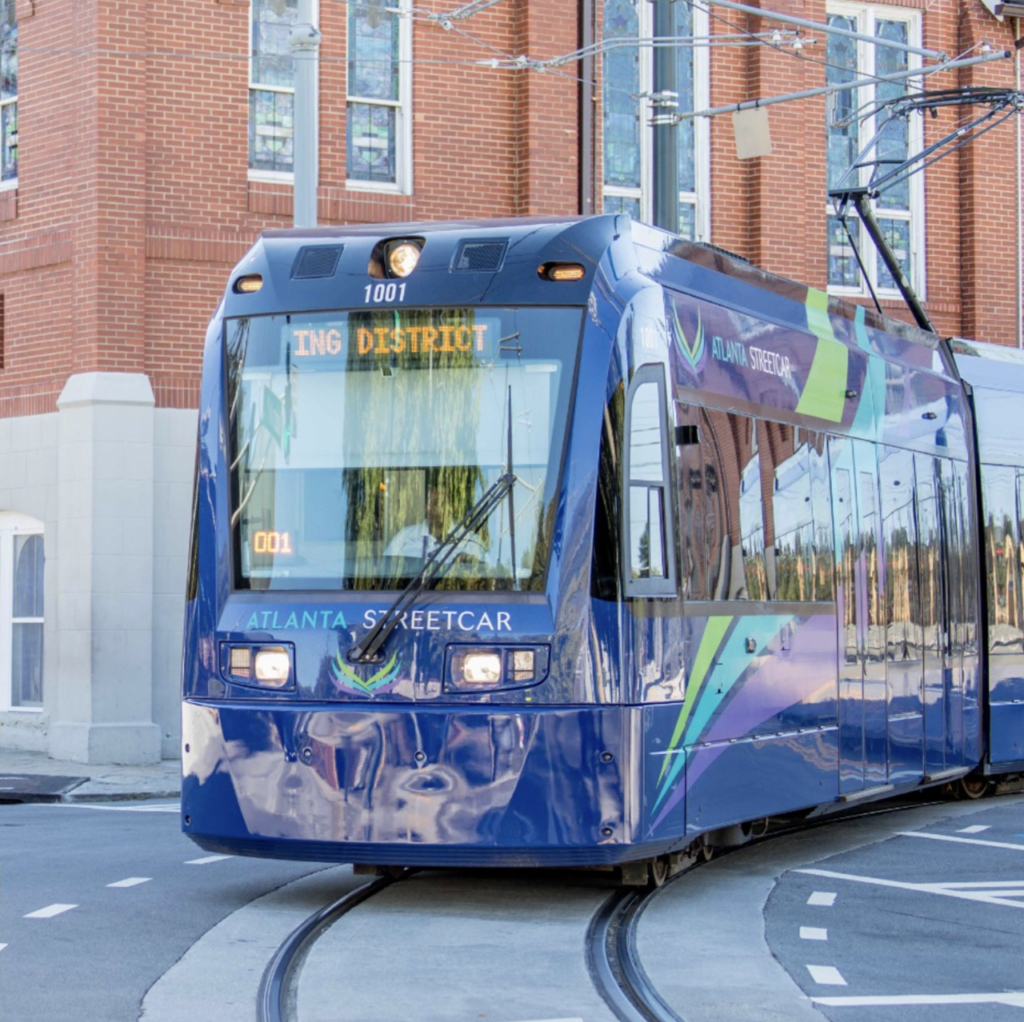
Transit Briefs: CHSRA, MARTA
Written by Marybeth Luczak, Executive Editor
CHSRA has now identified “multiple potential packaging and procurement approaches” for rail system elements including track, systems, overhead contact systems (OCS), trainsets, operations, and maintenance facilities for the initial operating segment, Merced to Bakersfield.
The California High-Speed Rail Authority (CHSRA) is seeking industry feedback on its track, systems and trainset procurement options. Meanwhile, ridership forecasts have dropped for the future project, while costs are on the rise. Also, Metropolitan Atlanta Rapid Transit Authority (MARTA) releases a revised project priority list.
CHSRA on March 2 began seeking feedback “from experienced market participants” on its revised procurement approach for track, rail systems and trainsets.
In October 2022, the Authority announced that in lieu of extending a track and systems procurement again, it decided to abandon two existing bids and restructure and re-bid the project. (According to The Sacramento Bee, track and system installation costs were underestimated before bids were sought. See starred paragraph below.)
CHSRA on March 2 said it has now identified “multiple potential packaging and procurement approaches” for rail system elements including track, systems, overhead contact systems (OCS), trainsets, operations, and maintenance facilities for the initial operating segment, Merced to Bakersfield, which it will supply upon written request to [email protected].
The Authority is looking for comments on the procurement options from qualified rail delivery entities in the areas of design and delivery of track, signaling, power supply, OCS, communications, trainsets, operations control center and maintenance facilities. Submissions are due by March 31, and will be subject to public disclosure pursuant the California Public Records Act, according to CHSRA. “Any trade secret or proprietary information submitted must be marked as such for the Authority to consider whether such items may remain confidential,” the Authority said. “Do not submit marketing or promotional materials.”
Additionally, firms may request a virtual meeting with CHSRA during the industry feedback period if they have experience as a prime team member or first-tier subcontractor on a contract for one or more of the following: high-speed rail track design and installation (i.e., 300 kph operating speed, or experience in FRA Class 7 track or greater installation in the U.S.); high-speed rail OCS (i.e., 300 kph operating speed) and/or power supply; high-speed rail signaling and telecommunications (i.e., ETCS Level II or equivalent); rail maintenance facilities; rail operation centers; and high-speed rail trainsets (i.e., 300 kph operating speed). A request for a meeting and/or materials, including a brief explanation of the firm’s qualifications, must be submitted to [email protected] by March 15, 2023.

Separately, The Sacramento Bee on March 1 reported that ridership forecasts for California’s high-speed rail project are down due changing travel patterns brought on by COVID-19 and “sluggish” expectations for state population growth. In CHSRA’s 2023 Project Update Report to the California Legislature, “the expectation for overall train ridership in the Valley [on the 171-mile Merced to Bakersfield segment] dipped from almost 8.8 million passengers per year forecast in a 2019-2020 financial plan to about 6.6 million in the 2023 project update,” the paper reported. “That translates to a decline of almost 25% in the ridership forecast, which represents collective rail ridership including existing passenger rail service offered by Altamont Corridor Express (ACE) trains in the North Valley and Amtrak’s San Joaquin trains, as plans call for the high-speed rail route to connect with both ACE and Amtrak at Merced.”
During a February preview of the report, CHSRA CEO Brian Kelly said the lower forecast was due to “slower population growth than previously predicted in the state, a slowdown in employment and new jobs, and sluggish recovery of overall transit commuter ridership in the aftermath of the COVID-19 pandemic as more people worked from home rather than commuting every day to an office or workspace,” according to the newspaper. He noted that “[t]here was a time when California was going to have about 50 million people by 2040. That (forecast) now is 41.5 million,” which means a lower pool of potential riders.
For the full Phase I system between San Francisco and Los Angeles/Anaheim, the 2020 business plan estimated 2040 ridership at 38.58 million per year, while the 2023 update said it would be 31.28 million, a 19% decline, the newspaper reported.
According to Kelly, The Sacramento Bee reported, those figures are preliminary: “‘We’re going to do a lot of refinement with these with our partners over the course of the next several months and report further in the 2024 business plan.’ He said the rail authority’s efforts will include Caltrans, which oversees intercity rail in California, as well as the two joint powers authorities that operate the ACE and Amtrak San Joaquin train services.”
The newspaper reported that diminished ridership will affect operating revenues, and “Proposition 1A, the $9.9 billion high-speed rail bond measure approved by California voters in 2008, includes a key provision that requires the system to be self-sufficient and be able to cover its own operating costs without any subsidies from taxpayers.” Kelly said in February that while “[i]t’s true that for the full Phase 1 system, the bond bill says the program shouldn’t be subsidized, but even at the lower ridership estimate we now see 31.5 million riders between San Francisco and Los Angeles,” according to the newspaper. “We think that is still going to be a net operating system surplus.”
A CHRSA spokesperson told the newspaper: “‘The authority recognizes that its implementation strategy for interim high-speed rail service connecting Merced, Fresno and Bakersfield may expose the authority to potential litigation over Proposition 1A compliance’ related to subsidies. But ‘the authority believes that there will be no violation of the subsidy language because … the implementation strategy for the Central Valley segment is to lease its track and railcars to another operation. The entity leasing the assets from the authority will bear the revenue risk as it pays a fixed lease fee and receives revenue from the operations and a lower-than-current subsidy from the state.”
The San Joaquin Joint Powers Authority has a memorandum of understanding with CHSRA to operate Valley service, according to The Sacramento Bee.
The CHSRA spokesperson told the newspaper: “This will put the completed infrastructure into service with greater benefits to passengers while the interim service is being run. … The authority is confident that it will prevail in any future litigation touching on these areas.”
Another project complication is cost, the newspaper said: In CHSRA’s 2022 business plan, the estimate for the “Merced-Bakersfield segment to become operational ranged from $22.5 billion to about $24 billion. The 2023 update now projects the cost in a range between $29.8 billion and $32.9 billion.”
** According to The Sacramento Bee, “[p]art of the problem was underestimating the cost of installing track and systems on the Merced-Bakersfield route before it sought bids last year. ‘We saw the supply chain impacts in the marketplace and we saw the inflationary impacts,’ Kelly said. ‘So now we’ve upped our estimates for what track and systems will cost going forward.’”
The paper said that construction is well under way on the 119-mile stretch from northwest of Madera to Shafter, northwest of Bakersfield. However, CHSRA “does not have the money it needs to extend construction north into downtown Merced and south into downtown Bakersfield to provide a fully operational 171-mile line by a target date of 2030,” the newspaper reported. So far, CHSRA has received some $3.5 billion in federal grants, “much of that coming in 2010 and 2011, for construction in the Valley,” the newspaper said. “The rest of the money being used to build has come from Proposition 1A and from the state’s greenhouse gas reduction program. But authority officials say they cannot complete the extensions to Merced and Bakersfield without additional federal assistance. And uncertainty over whether the California High-Speed Rail Authority can successfully compete for federal grants from the 2021 Bipartisan Infrastructure Law or other federal programs translate to potential delays in launching train operations with passengers.” (The Sacramento Bee on Feb. 10 reported that CHSRA was unable to secure more than $1.2 billion in competitive grants from the U.S. Department of Transportation’s Multimodal Project Disciplinary Grant program.)
According to the paper, Kelly said CHSRA “has developed a ‘schedule envelope’ spanning from 2030 to 2033 for operations to begin. ‘The biggest risk,’ he added, ‘is the availability of funding as we make the schedule going forward.’”

Atlanta’s WXIA-TV / 11Alive on March 2 reported MARTA’s new list of priority projects, which focuses on “nine expansion programs to build out with funds from the ‘More MARTA’ sales tax money voters approved six years ago.”
The transit authority narrowed down to 19 its 70-plus project “wish list,” according to the media outlet, and presented a revised sequencing plan to the City Council on March 1. Nine projects were “considered Tier 1 projects with hard timetables and funding moving forward,” and the “ten Tier 2 projects, according to MARTA documents, ‘will be reevaluated for timelines based on financial modeling, equity and schedule,’” WXIA-TV / 11Alive reported. The revised list includes the Summerhill bus rapid transit (BRT) line; Cleveland Avenue arterial rapid transit (ART) bus line; Metropolitan Parkway ART; Bankhead Station expansion; Streetcar East extension (to Ponce City Market) light rail line; Five Points Station renovation and expansion; Campbellton Road BRT; Greenbriar Transit Center; and Clifton Corridor BRT.
“Of those projects, MARTA notes that Summerhill is currently in the construction phase, with a target completion date of 2025; Cleveland Avenue, Metropolitan Parkway, Bankhead and Streetcar East are in the final stages of the design process, with targeted completions of 2025 for Cleveland Avenue/Metropolitan Parkway, 2027 for Bankhead and 2028 for Streetcar East; and Five Points, Campbellton Road, Greenbriar and Clifton Corridor in the conceptual design phase with targeted completions of 2026 for Five Points and 2028 for the other three,” according to the media outlet.
WXIA-TV / 11Alive concluded that “MARTA’s financial model included in documentation projects close to $2 billion in funds the agency can expect for More MARTA City of Atlanta projects through Fiscal Year 2032, with about a $25 million cushion above planned total expenditures through that time period.”



